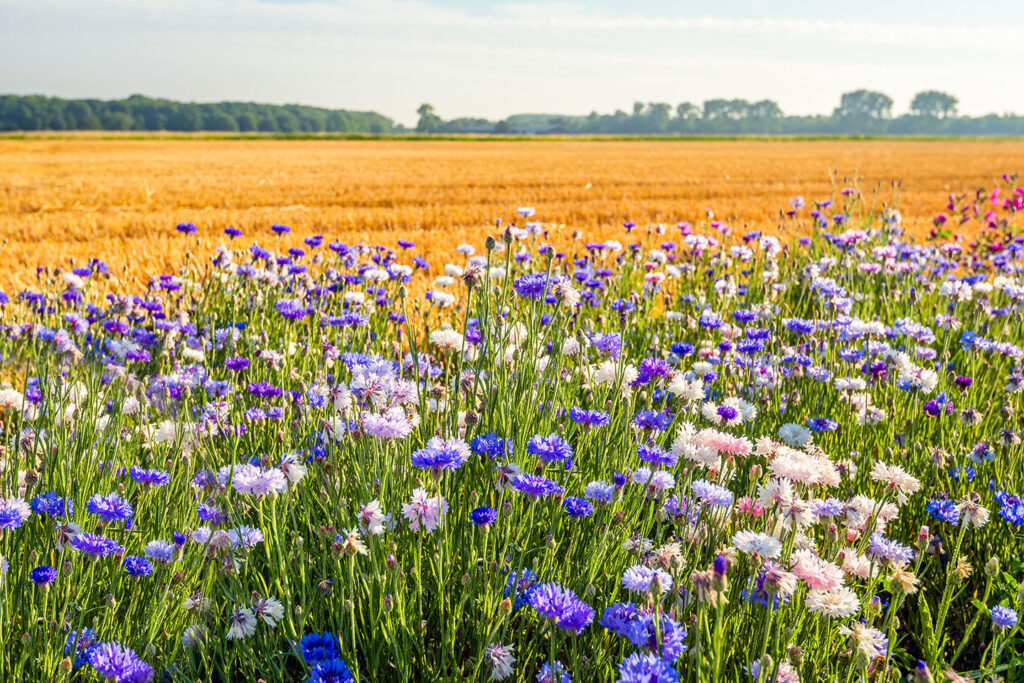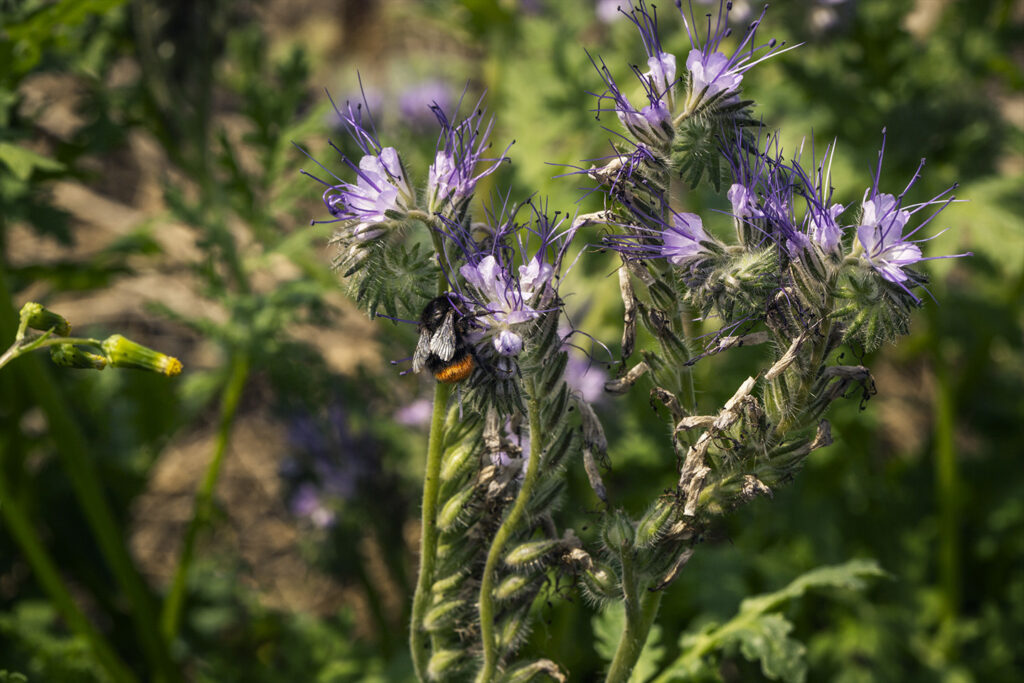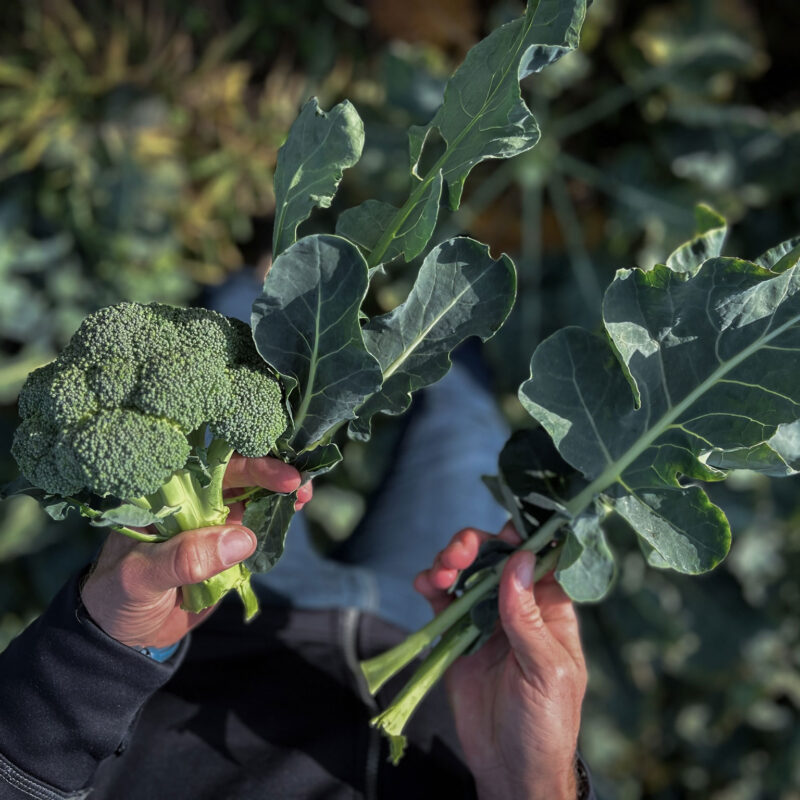TRANSECO – Can Agroecology be Profitable?
Is it possible to have a food system that utilizes ecosystem services while remaining profitable? To find out, the TRANSECO project investigates agroecological farming, where farmers reduce the use of chemical pesticides and fertilizers, replacing them with enhanced ecosystem services. The project compares the economics and ecology of 15 farms using agroecological principles and 15 conventional farms in Sweden. The question at hand is whether it yields an equal or even greater effect for the farmer to work the land less to increase its fertility.

In agroecological cultivation, ecosystem services from cultivated and wild biological diversity replace fossil-based input materials like mineral fertilizers and pesticides.
The Issue
The global food system stands as one of the major causes of biodiversity loss. Even in Sweden, there has been a rationalization within agriculture that has led to larger fields and more intensive cultivation systems with higher use of mineral fertilizers and pesticides. These lead to greenhouse gas emissions during the production of inputs and nutrients that leak into waterways, causing eutrophication and acidification, resulting in disrupted ecosystems.
Another factor negatively affecting biodiversity is the compaction of agricultural land with heavy machinery, making it harder for insects, worms, and microorganisms to thrive and perform their ecological functions. There is still a lack of knowledge and business models encouraging farmers to transition, a gap that TRANSECO aims to address.
The transition to agroecological farming must happen with maintained or improved farm economics.
– Christian Sjöland, Project Manager Future Food, Axfoundation
Our Solution
The solution lies in a food system where it is profitable to conduct farming that benefits biological diversity. The TRANSECO project works towards this goal. It aims to facilitate more Swedish farmers transitioning to a resource-efficient and sustainable agriculture that uses fewer input materials (often fossil-based) and relies more on ecosystem services provided by biological diversity, such as insects pollinating crops or worms enhancing soil fertility.
TRANSECO compares the economics and ecology between 15 farms using agroecological principles and 15 conventional farms in Sweden. This comparison will contribute to understanding how agroecological methods can affect farm yield, ecosystem services, and agricultural economics in a changing climate. The ambition is for TRANSECO to stimulate the transition to sustainable cultivation methods, technical innovation, and increased profitability for farmers. Stakeholders from the entire value chain collaborate to test these concepts among both farmers and consumers.

Wild and cultivated pollinators like bees, butterflies, and other insects play a crucial role in the production of many crops.
Project Goals
Overall Impact Goals:
- Strengthen the link between profitable and environmentally sustainable farming.
- Reduce the negative impact of Swedish agriculture on climate and biological diversity.
Sub-goals:
- Evaluate agroecological methods: Test various agroecological methods and assess their effects on the environment, climate, and profitability compared to conventional farming methods.
- Assess resilience to a changing climate: Investigate how agroecological methods affect a farm’s resilience to climate changes like droughts and floods.
- Develop indicators: Evaluate indicators that measure the progress of a farm in its transition and could serve as a basis for marketing and certification.
- Map acceptance: Investigate the conditions for widespread adoption of agroecological farming and the incentives required for different actors within the Swedish food system to transition.
- Increase knowledge and develop business models.
Our Work
Axfoundation’s role in TRANSECO is to ensure the project’s commercial viability, enabling research results to support farming that is both sustainable and profitable. For instance, the project evaluates whether working the land less to increase soil fertility, thus requiring less mineral fertilizers, yields an equal or even more significant effect for the farmer. Key questions to answer include: What might a profitable and sustainable business model look like? Who should pay for sustainable farming? Does it need to be more expensive? Is there a need for a new label for agroecological principles?
TRANSECO assesses to what extent a farm practices agroecology. Instead of classifying a farm as either organic or conventional, the assessment is based on five parameters:
- The quality of crop rotation
- The amount of pesticides used
- The quantity of fertilizers used
- Soil tillage practices
- Use of cover crops
The project also evaluates how various factors, such as labor input, capital, and nutrients, influence the farm’s economic efficiency and productivity.
Stakeholders across the entire food chain, from farm to table, participate in the project to evaluate and develop efficient cultivation methods and market solutions that facilitate the transition to sustainable agriculture. TRANSECO does not exclude either conventional or organic growers. All farmers should feel welcome to explore and assess new methods.
Agriculture, just like any other business, must operate within the planetary boundaries while remaining profitable.
– Maria Lundesjö, Project Manager Future Food, Axfoundation
Partners
The TRANSECO project is led by the Swedish University of Agricultural Sciences (SLU), responsible for interdisciplinary research in both ecology and economics, together with Axfoundation, Abdon Food, Axfood, and 30 farmers in Skåne.
Mini Glossary
Agroecological agriculture involves the farmer employing a set of cultivation principles, including maintaining a favorable and diverse crop rotation, using fertilizers and pesticides in a resource-efficient manner, practicing low or no soil tillage, and utilizing beneficial cover crops. Examples of these cover crops include legumes because they fix nitrogen, making it available as nutrients for future crops. In agroecological cultivation, the goal is for the ecosystem services arising from these principles to replace fossil-based inputs such as mineral fertilizers and pesticides.
Organic farming primarily focuses on managing agriculture as an ecosystem rather than relying on external inputs such as mineral fertilizers and chemical pesticides. The significant difference lies in the fact that organic farming has a regulatory framework and certification bodies that scrutinize compliance with these rules. Many of the principles within agroecological agriculture align with the regulations within organic farming.
Conventional farming is a term used to describe the most common cultivation form today. It is the term used when there are no specific principles governing cultivation methods. The use of mineral fertilizers to provide nutrients is permitted, and approved chemical pesticides limiting damage from insects, diseases, and weeds are allowed within the framework of Swedish regulations.
Ecosystem services/ecological functions are the products and services that nature’s ecosystems provide to humans, contributing to our well-being and quality of life. In conventional farming, a lack of developed ecosystem services can be compensated for with chemical pesticides and mineral fertilizers.
Cover crops are not primarily grown for harvest but rather to provide various benefits to the agricultural system, often between the regular growing seasons for main crops. Cover crops play several crucial roles in sustainable agriculture, including improving soil structure, nitrogen fixation, and reducing the occurrence of diseases and pests. They also keep the soil covered and green for a significant part of the year, which is positive for carbon sequestration.
Examples of Ecosystem Services
- Pollination: Wild and cultivated pollinators such as bees, butterflies, and other insects play a crucial role in the production of many crops. By fertilizing flowers, they contribute to the formation of fruits, nuts, and other crops, vital for the diversity and abundance of food production.
- Soil health: The activity of soil-dwelling organisms like worms and microbes contributes to breaking down organic material and transforming it into nutrients that plants can absorb. This improves soil fertility and structure, helping to maintain a healthy soil environment. The addition of natural fertilizers/manure or other soil conditioners like compost is beneficial for soil health.
- Biological pest control: Beneficial predators and parasites such as ladybugs, spiders, and birds help control populations of harmful insects and diseases. This reduces the need for chemical pesticides and contributes to creating a more balanced ecosystem in agriculture.
- Plant resilience and disease control: By cultivating a wide range of crops and using resistant varieties, the risk of large-scale disease outbreaks and pests can be reduced. This enhances the system’s resistance to diseases and pests.
- Carbon sequestration: Carbon sequestration reduces the amount of carbon dioxide in the atmosphere by storing it in the soil or vegetation. By maintaining healthy soil and increasing organic material, agricultural systems can contribute to carbon sequestration. Carbon in the soil is stored in organic material like roots, plant residues, microorganisms, and manure. The duration of carbon storage in the soil varies depending on how it is bound and how it reacts with soil particles. Roots are better at storing carbon in the soil than above-ground plant residues. Therefore, it is essential to keep the soil covered with vegetation for as much of the year as possible.
- Water regulation and purification processes: Agroecological systems can improve the soil’s ability to absorb and retain water, reducing erosion and runoff. Additionally, plants and microorganisms in the soil can help filter and purify water.

























































